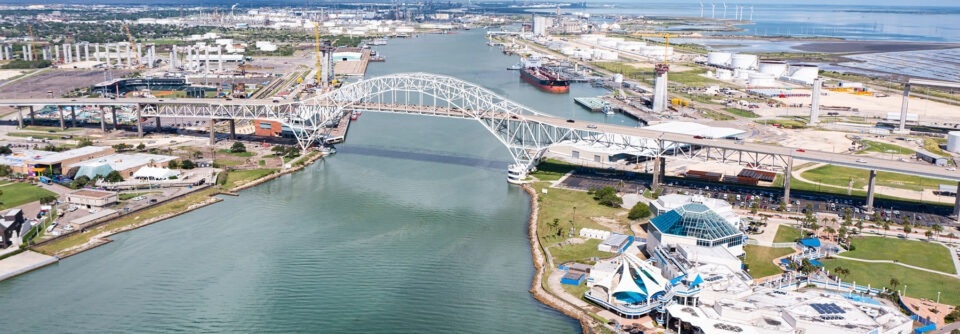Researchers at the University of Texas Jackson School of Geosciences’ Bureau of Economic Geology are assisting the Port of Corpus Christi in determining if it may permanently store greenhouse gas emissions from industrial activity at the port beneath the seafloor of the Gulf of Mexico.
 The Port of Corpus Christi has turned to the Gulf Coast Carbon Center to determine if it can capture and store its greenhouse emissions offshore. Image Credit: University of Texas Jackson School of Geosciences.
The Port of Corpus Christi has turned to the Gulf Coast Carbon Center to determine if it can capture and store its greenhouse emissions offshore. Image Credit: University of Texas Jackson School of Geosciences.
The project’s purpose is to securely store carbon dioxide (CO2) emissions from industrial activity at the country’s largest energy port in geological formations deep beneath the seafloor in surrounding state-managed seas.
The port is utilizing the skills of some of the world’s greatest carbon capture and storage researchers at the bureau to assist in locating the optimum places and determining the project’s technical and economic feasibility.
According to Tip Meckel, a Senior Research Scientist at the bureau’s Gulf Coast Carbon Center, a significant study in the area has already been done that could help the project.
The Gulf of Mexico Basin is one of the most studied geologic basins in the world, so we know a tremendous amount about it already. Myself and others at the carbon center have been working on this topic for the Department of Energy for almost 10 years now. We’ve conducted regional studies from, more or less, Corpus Christi to the Louisiana border and put together a very nice storage resource map and high-level capacity estimates.
Tip Meckel, Senior Research Scientist, Gulf Coast Carbon Center, Bureau of Economic Geology, University of Texas Jackson School of Geosciences
Meckel has been a scientist at the Gulf Coast Carbon Center for over 16 years.
The feasibility study, which will last two years and is supported by a $7.36 million grant from the US Department of Energy, will review the best means for transporting CO2 from the port to an offshore storage location.
The site would be in state waters on Texas General Land Office land. The leasing income goes to the state’s Permanent School Fund, which helps fund primary public education in Texas.
Meckel and his Gulf Coast Carbon Center team will employ high-resolution marine seismic imaging technologies to define prospective storage sites and collect baseline data for long-term monitoring if the project continues.
With over 200 tenants and customers, the Port of Corpus Christi is the largest in the country in terms of total revenue tonnage and the largest exporter of domestically produced energy. The port is also investigating the viability of storing the pollutants on port-owned property onshore as part of a second initiative.
The Gulf Coast Carbon Center is also advising on the project. According to the US Environmental Protection Agency, each planned carbon capture and storage project aims to store at least 50 million metric tonnes of CO2 over a 30-year period, which is roughly the equivalent of the CO2 released by nearly 11 million average gasoline-powered vehicles in a year.
The Port of Corpus Christi is thrilled to collaborate with The University of Texas at Austin on this milestone project. Our partners in academia are instrumental in our ambition to develop a scalable, centralized carbon management solution.
Jeff Pollack, Chief Strategy and Sustainability Officer, Port of Corpus Christi
According to Meckel, the project is part of an increasing trend of interest in carbon capture and storage projects in the Gulf Coast and other areas that would employ subsurface geological formations to permanently store greenhouse gases.
The Gulf Coast Carbon Center is a renowned global leader in the field for more than 20 years, having worked on the issues of properly storing CO2 underground and watching the sites to guarantee the gas does not leak into the atmosphere and contribute to climate change.
Regardless of the fuel source, the purpose of CCS is to reduce emissions into the atmosphere.
“Given that we will need fossil fuels for many decades to meet the needs of a healthy society, CCS is an important technology to lower global atmospheric emissions,” adds Bureau Director Scott Tinker, who helped form the GCCC over two decades ago.